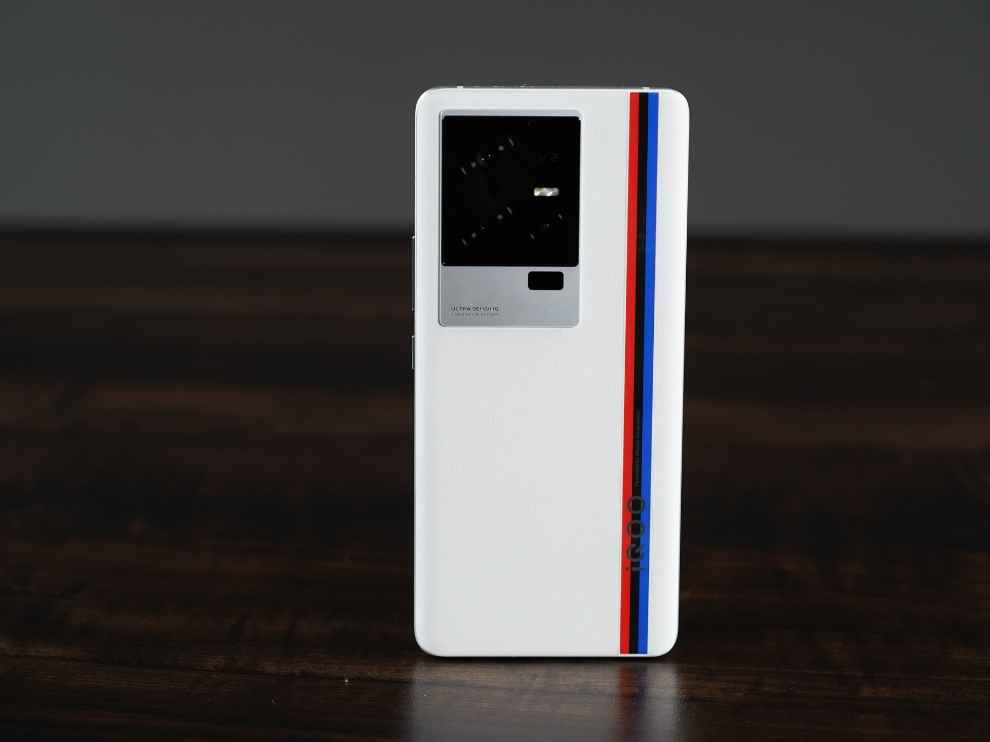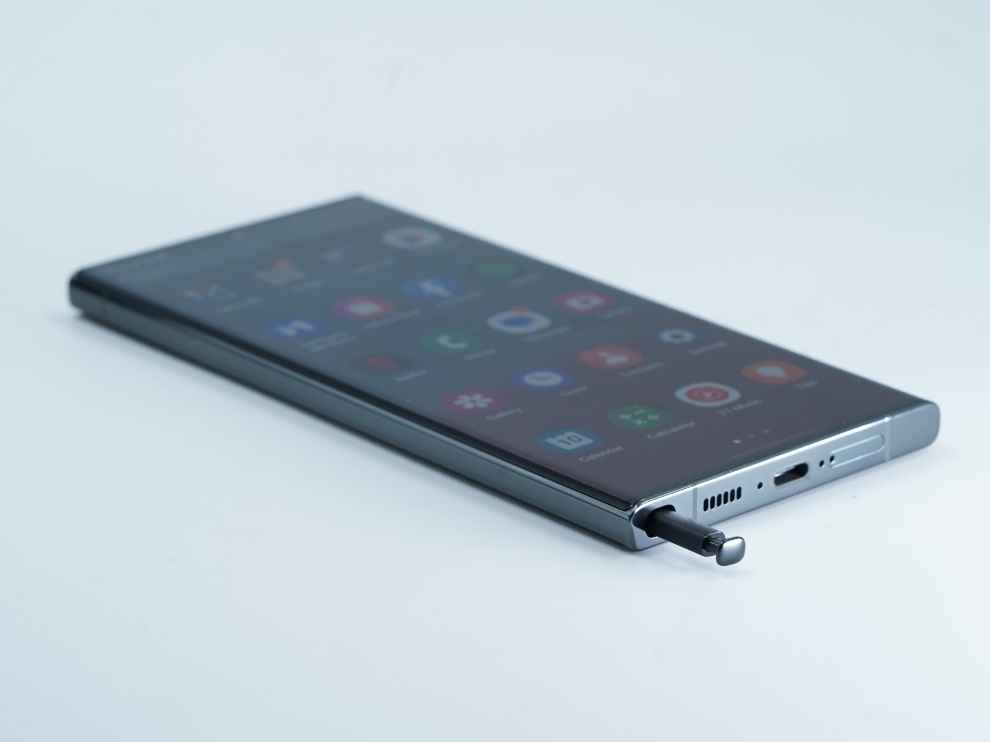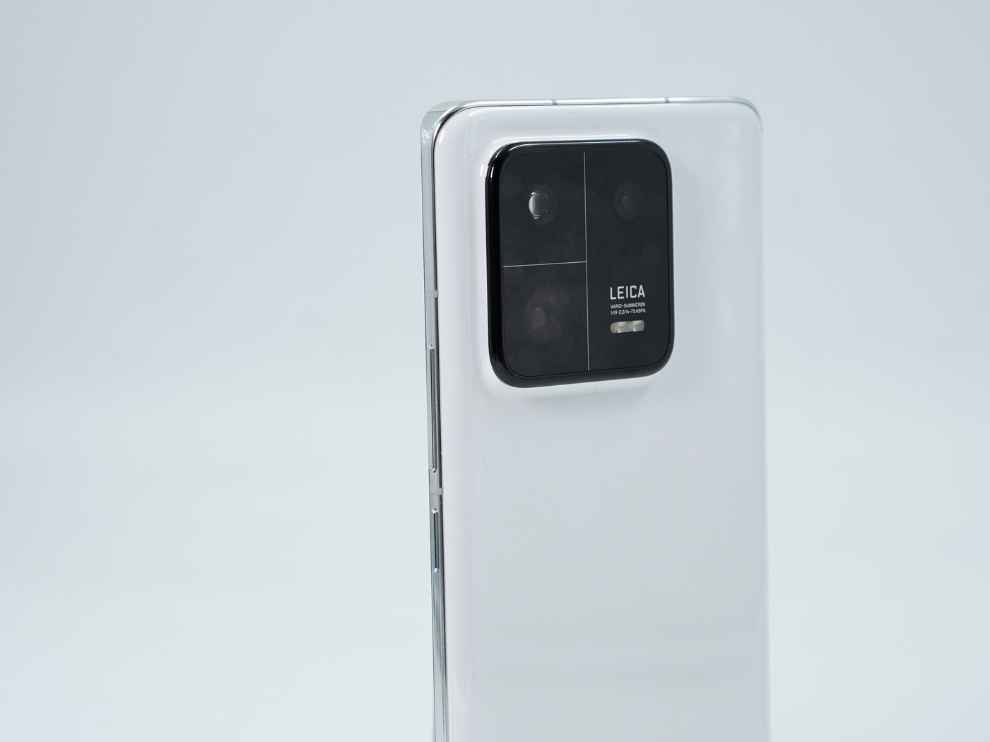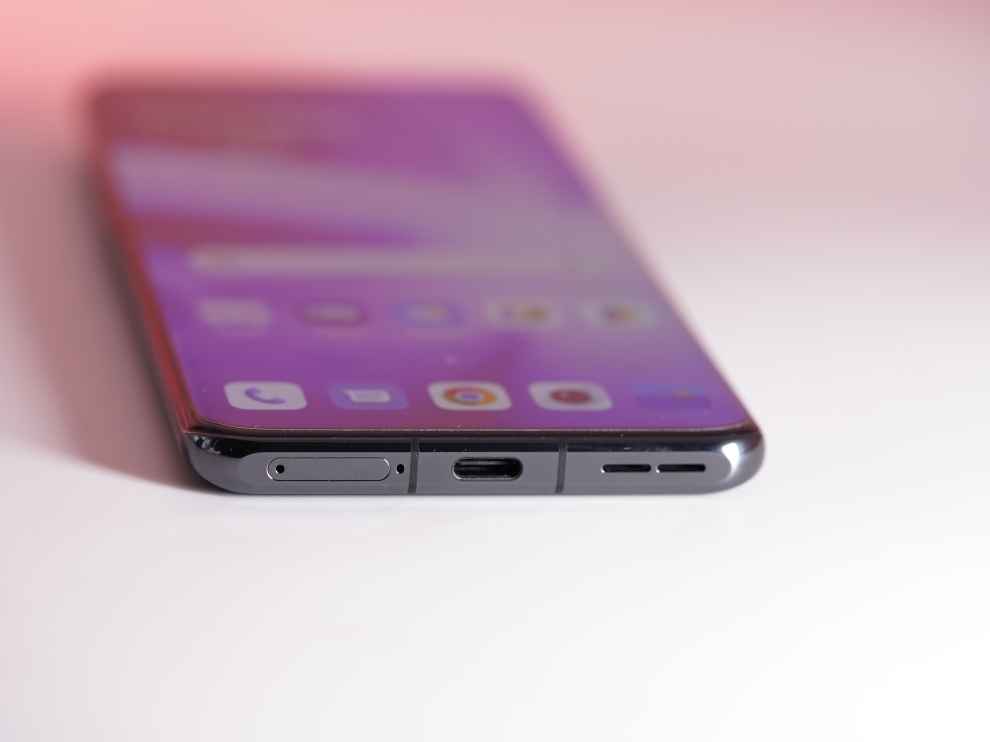Comparison of iQOO 11 vs OnePlus 11 vs Samsung Galaxy S23 Ultra vs Xiaomi 13 Pro and the winner is
In this comparison of 2023 Android flagships, we have Samsung Galaxy S23 Ultra, iQOO 11, OnePlus 11, and Xiaomi 13 Pro
All of them run of Snapdragon 8 Gen 2 SoC.
We compare the 4 Android flagships on design, display, performance and battery parameters.
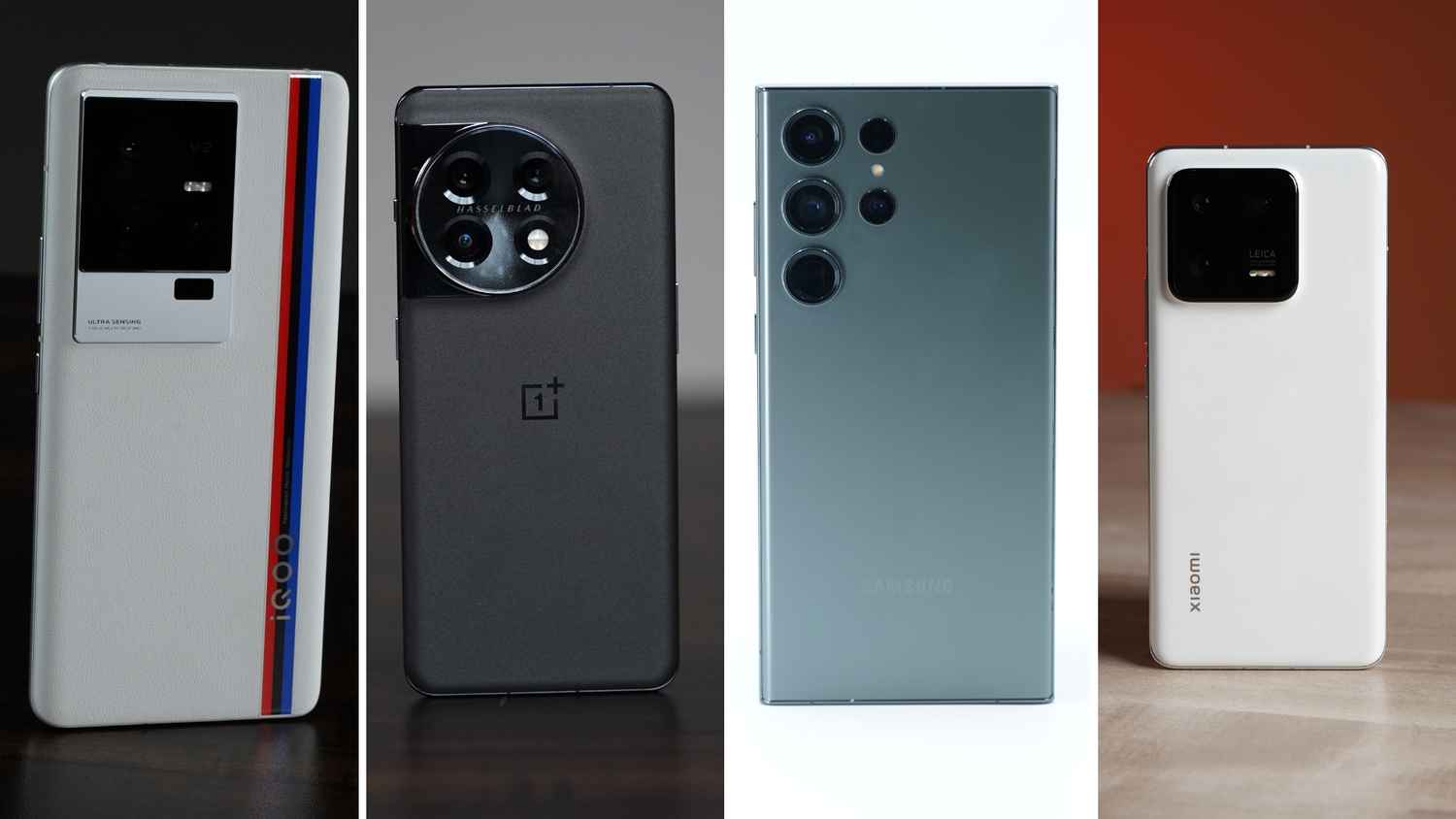
We are just about three months into 2023 and the Android flagship battle is already hot. Flagship smartphones from iQOO, Samsung, OnePlus, and Xiaomi have already made their way to India, making for a super exciting start to the premium smartphone segment this year. These flagship smartphones have quite a lot in common – all of them are powered by Qualcomm’s Snapdragon 8 Gen 2 chip, (the Galaxy S23 Ultra has a custom variant of the Snapdragon 8 Gen 2), all of them have premium LTPO AMOLED displays, and all of them boast of powerful camera setups.
 Survey
SurveyHowever, each of these flagships has its own strong points and differentiating factors. For example, the Samsung Galaxy S23 Ultra has a custom chip and a new camera. OnePlus and Xiaomi have collaborations with camera brands like Hasselblad and Leica, respectively and the iQOO is all about performance with the BMW M Motorsport-inspired offering. All these phones, however, claim the best of the best when it comes to an Android flagship experience. But which of them is really the best or suits what kind of user, let’s find out.
So we at Digit put the iQOO 11, Samsung Galaxy S23 Ultra, OnePlus 11, and the Xiaomi 13 Pro head-to-head against each other to see which of these flagship smartphones is the most powerful. During our test, we ran several benchmarks on each of these smartphones, tested out their battery and charging capabilities, and played several games on each of them. Further, we tested their displays, took a long hard look at the designs, and of course, took some pictures to see if the cameras are any good. Here are our thoughts:
iQOO 11 vs OnePlus 11 vs Samsung Galaxy S23 Ultra vs Xiaomi 13 Pro: Design
Starting with the design, all four Android flagships of 2023 have their own distinctive features. While the iQOO 11 comes with the BMW M Motorsport-inspired racing stripes design with the faux leather back panel, the Samsung Galaxy S23 Ultra has its now-iconic form factor which looks pretty much the same as its predecessor. The OnePlus 11 has a new round camera module implementation, and the Xiaomi 13 Pro introduces a new design language for the Xiaomi flagship series.
The iQOO 11 has arguably the least dramatic design. There is a flat hole-punch screen up front, and a faux leather back panel, with BMW M Motorsport racing stripes. These blue and red racing stripes have a glossy finish, and to add to the detail, you can see a carbon-fibre-like pattern inside the racing stripes upon looking closely. Very cool attention to detail. The rectangular camera cutout is placed in the top-left corner, which also has a two-tone colour scheme with both grey and black panels. The top and bottom of the aluminium frame are flat, which allows users to make the smartphone stand on any flat surface.
Overall, I like the subtle design. While there are a couple of rough edges here and there like the screen not merging into the frame as seamlessly as its competition, the iQOO 11 is still beautiful. I love the premium in-hand feel that comes with the faux leather back panel, and the smartphone is also one of the lightest among the four, making it easy to hold and carry.
Coming to the Samsung Galaxy S23 Ultra, the Samsung flagship has a very similar design to its predecessor. With pretty much the same looks as the Samsung Galaxy S22 Ultra, the Galaxy S23 Ultra’s design change is more than meets the eye. With this year’s flagship, Samsung has made changes where it matters. The Galaxy S23 Ultra’s edges are flatter now, along with the flat frame on the left and the right sides, similar to what we had seen on Samsung Galaxy Note devices before their demise. The curved display implementation is also slightly different this time around.
Now, while the design change is minor, the impact it makes is not. The Samsung Galaxy S23 Ultra is now easier to hold in your hands and the grip has improved. Given the sheer size of the S23 Ultra, this is a welcome change. The smartphone is still a bit too big for many users and the weight may also make things uncomfortable for many users.
With the OnePlus 11, we are witnessing a new design language from the brand. The OnePlus 11 has one of the more compact form factors among the four competing devices. We see a new round camera module with four cutouts for the cameras and the flash. The in-hand feel of the OnePlus 11 is proper OnePlus. The sandstone finish, and the alert slider, all of it is very familiar with OnePlus, but we get it in a new shape now. The round camera module is something that may not have many takers, but the OnePlus 11 looks and feels like a proper OnePlus flagship.
The Xiaomi 13 Pro, which is the latest flagship from the Chinese OEM, also introduces a new design language. The Xiaomi 13 Pro has a curved display up front, with a hole-punch cutout in the middle. At the back, the smartphone has a square camera module, with a Leica-powered triple camera setup. Xiaomi has given a ceramic back panel on the 13 Pro, which looks and feels super premium. In white, especially, the black camera module gives the smartphone a ‘Panda’-like colour scheme.
The size of the Xiaomi 13 Pro is also the best among the four competitors. It is handy, compact, and easily usable with a single hand. The one issue with the design, however, is the camera module’s thickness. This is probably the thickest camera module on any smartphone, and the Xiaomi 13 Pro slants when placed on a flat surface. The camera module also interrupts while playing games or watching videos. Furthermore, the Xiaomi 13 Pro is heavy. You may not feel the weight initially, but with prolonged usage, things get quite uncomfortable.
Also read: iQOO 11 vs OnePlus 11 comparison: Specifications, price and features
iQOO 11 vs OnePlus 11 vs Samsung Galaxy S23 Ultra vs Xiaomi 13 Pro: Display
With the display, it is not easy to give a verdict as to which of these Android flagships has the best display. All four smartphones boast 2K AMOLED displays, along with many other features. The iQOO 11 is the only display among these that supports up to 144Hz refresh rate, while the other three have a 120Hz refresh rate. Given that these are the top-tier Android flagships of this year, all of them are very good displays. But of course, there are differences, no matter how minor.
In our usage, the iQOO 11 display seemed the most saturated. The contrast is the steepest here, and the iQOO 11’s display seemed to be overdoing the skin tones in most cases. Using the smartphone in vivid or saturated colour profiles makes the display’s tone too warm and enhances reds a bit too much.
The Samsung Galaxy S23 Ultra, on the other hand, manages colours much better. This display is considered one of the best on any smartphone out there and with good reason. We get a 6.8-inch WQHD+ Dynamic AMOLED panel with LTPO. While this display also has a slightly high contrast, the colour accuracy is much better as compared to the iQOO 11. We tested this display for colour accuracy, and it showed an average DeltaE of 2.4 in sRGB, which is very good. The maximum DeltaE was 4.3 on orange or saffron colours, meaning that orange or saffron are the least accurate colours on this display.
The OnePlus 11, which also has a QHD+ AMOLED panel also showed good results in our tests. Surprisingly, in the Calman test, the OnePlus 11 showed better numbers as compared to the Samsung Galaxy S23 Ultra in sRGB colour space, with an impressive Average DeltaE of 2.1. This means that the colours on this display are as accurate as it gets on a smartphone.
Coming to the Xiaomi 13 Pro, the latest flagship from the Chinese manufacturer showed better results as compared to any of the other competitors. The primary and secondary colours showed almost no error, meaning that this is as good as a display could get. The average Delta E was 1.74, while the max Delta E was 2.5. In grayscale also, the Delta error came out to be 2, which is very good for a smartphone display.
We can’t talk about displays without mentioning the brightness. While each of these companies claims different levels of brightness, we tested it using a Lux Meter. According to that, the Samsung Galaxy S23 Ultra’s display came out to be the brightest, with a maximum brightness of 1192 nits. Samsung is followed by the Xiaomi 13 Pro, which showed a peak brightness of 968 nits, followed by the OnePlus 11 with its 880 nits tested peak brightness, and the iQOO 11 came last with its 820 nits peak brightness, according to our Lux Meter test.
Also read: 5 Samsung Galaxy S23 Ultra vs OnePlus 11 specs comparison to know about
iQOO 11 vs OnePlus 11 vs Samsung Galaxy S23 Ultra vs Xiaomi 13 Pro: Performance
Performance is where all these four devices gave each other tough competition. On paper, things aren’t too different among all four of these. The iQOO 11, OnePlus 11, Samsung Galaxy S23 Ultra, and the Xiaomi 13 Pro, all come with Qualcomm’s Snapdragon 8 Gen 2 chipset. The Galaxy S23 Ultra, however, has a custom Snapdragon 8 Gen 2, which has the same architecture as the normal Snapdragon 8 Gen 2, but with a slightly higher clock speed.
Coming to numbers, things are close. Neither of these new flagships is a clear winner. For example, on AnTuTu, the iQOO 11 showed the highest score of 127241, followed by the Xiaomi 13 Pro which scored 1259912 points. The Samsung Galaxy S23 Ultra came third with a score of 1204573, and the OnePlus 11 came last with a score of 1045248 on AnTuTu.
On Geekbench, things were again very close. While the Samsung Galaxy S23 Ultra had the highest single-core score, the Xiaomi 13 Pro showed the highest multi-core score in this benchmark test (see graph below for all numbers).
In PC Mark 3.0, which is another CPU-based benchmark, the Samsung Galaxy S23 Ultra had the highest score of 15,530, followed by the Xiaomi 13 Pro’s 14,778 points. The iQOO 11 came third with 12,150 points, and the OnePlus 11 lagged behind here as well, with a 10,493 score.
Coming to GPU-based tests, in 3D Mark Wildlife, the Samsung Galaxy S23 Ultra again emerged winner with a score of 3781, followed by the OnePlus 11, which scored 3606 points. The iQOO 11 came third with 3,566 points, and the Xiaomi 13 Pro remained last here with just above 3000 points.
In gaming, all four flagships expectedly performed great. We ran Gamebench Pro on all four smartphones, and while all of them gave us a full 60FPS frame rate in all tests, the Samsung Galaxy S23 Ultra was the only smartphone that failed to give 100% stability in both the games we tested on Gamebench – Asphalt 9 and Call of Duty: Mobile. Apart from this, the OnePlus 11 also wasn’t able to achieve 100% frame rate stability in Call of Duty: Mobile, maxing out at 97%, the same as the Samsung Galaxy S23 Ultra.
iQOO 11 vs Samsung Galaxy S23 Ultra vs OnePlus 11 vs Xiaomi 13 Pro: Battery
One of the most important factors is the battery. Battery optimization relies heavily on the chipset in a smartphone. Since all these smartphones run on the same Snapdragon 8 Gen 2 SoC, the battery numbers are also quite similar. However, there was one clear winner – the Samsung Galaxy S23 Ultra. While the smartphone drains the battery a bit too fast during GPS navigation, in tasks like gaming and streaming, the Galaxy S23 Ultra doesn’t drain the battery easily.
The iQOO 11 drained more battery while streaming videos, but the smartphone sustained well in areas like gaming or GPS navigation. The OnePlus 11 showed a very balanced battery performance across tasks and durations, as well as the Xiaomi 13 Pro. However, the latest Xiaomi flagship drains the battery slightly faster between 75% to 25%, our video loop test showed.
Now, while the Samsung Galaxy S23 Ultra’s battery backup is the best among these four, it is soon mired by the slow charging. The Samsung flagship charged from 0 to 100 per cent in 84 minutes, which is the slowest. The iQOO 11 was the fastest and charged from 0 to 100 in just 27 minutes.
iQOO 11 vs Samsung Galaxy S23 Ultra vs OnePlus 11 vs Xiaomi 13 Pro: Verdict
So after analysing the displays and performance on all the Android flagships that have launched in 2023 so far, it is fair to say that each smartphone is equally good when it comes to performance and gaming. Overall, there is not much to differentiate these Snapdragon 8 Gen 2-powered flagships in terms of performance. Some offer better GPU or gaming performance, some get tasks done faster during your day-to-day usage.
The display on all these devices is good, but our tests showed that the Xiaomi and Samsung flagships leave the competition behind in terms of colour accuracy. However, Samsung edges past Xiaomi (unsurprisingly), given the higher brightness and a more vibrant colour profile.
To conclude, the Xiaomi 13 Pro and the Samsung Galaxy S23 Ultra are more camera-centric devices, while the iQOO 11 is focused towards gaming and performance. The OnePlus 11, on the other hand, banks on its lineage, partnership with Hasselblad, and a rather loyal consumer base, without having much to offer in terms of a differentiating factor.
So the answer is clear. If you want a proper flagship gaming and performance experience, any of these smartphones is good to go. However, if you want a more camera-centric device, the Samsung Galaxy S23 Ultra and Xiaomi 13 Pro offer way more than the other two in the competition. But if you want a smartphone purely for gaming and don’t care much for the cameras, the iQOO 11 among these is the best option. The OnePlus, you ask? Well, it offers a well-balanced experience, but we can’t call the smartphone better in any of the areas we tested it in.
